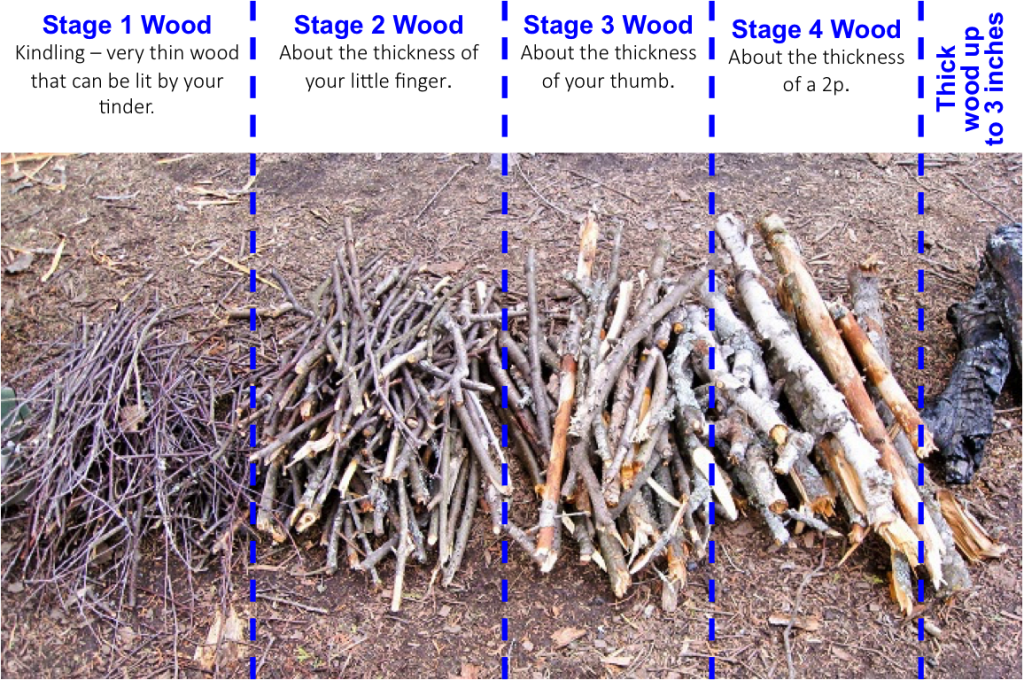When lighting a fire you need to have a stock of wood already collected. Once the fire is lit, you must remember it should never be left unattended. If you are lighting a fire for a significant period of time you must ensure you have a significant stock before you start or ensure you have someone else to help collect wood.
When collecting wood their are a number of key rules to follow:
- Firstly, check the regulations on fire wood collection where you are. In some areas (especially National Parks) you are required to bring your own fuel.
- Ensure you collect wood from the ground, living, fresh, green wood does not burn well and produces lots of smoke. Using this wood can make the fire uncomfortable to sit and work around.
- Collect a variety of thickness. The recommended size for campfires is around 3 inches of thickness and the length depends on the size of fire being created. Larger pieces can be cut to size or split, look at the tools section of the website (Click Here).
- Look for dark to gray colored wood, which will signify older and drier wood.
- Bang a few logs together. If they sound hollow, that’s a good thing.
- The wood should be light, which signifies little to no water.
- Look for wood with cracked ends, which means it’s dry.
- Pick the pieces with the bark missing or pulling off. Bark needs moisture to adhere to the wood.
When choosing your wood it is often important to consider the species of wood you have collected. Different trees produce wood that burns in different ways. Click the link below to learn about some of the best woods and the ways in which they burn.
Click here fore a more detailed guide from the Scouts.
Picture Reference [10]
After you have collected your wood, you should take your time to sort your work into piles of different thicknesses and arrange them near but not too close to the fire. As your fire gets going you will slowly move through the different stages of thicknesses.

